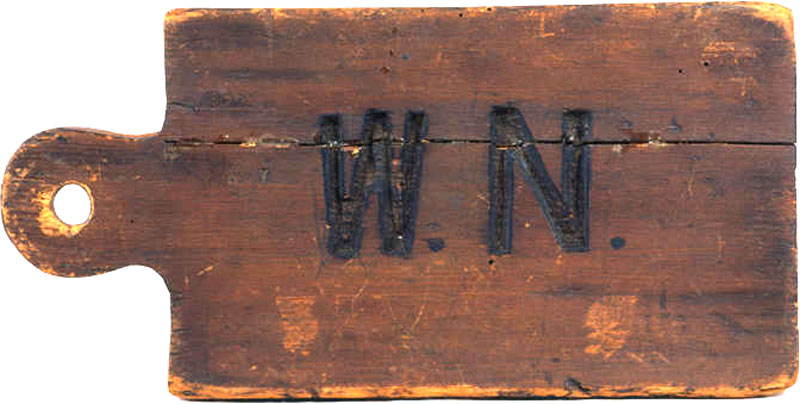
What was Welsh Not?
‘Welsh Not’, or sometimes just the initials ‘WN’, was a phrase etched onto a wooden board, designed to be worn around the neck. These were used in some Welsh schools during the C19th as a way to shame any child who was caught speaking Welsh.
The pupil would be made to wear the sign until another child was caught and the board would then be passed on to the culprit. At the end of the school day, the child wearing the Welsh Not would be beaten or punished in some way.
It was a practice which started at a time when the Welsh language had been diagnosed as a kind of ‘sickness’ that was harming the nation. It was a view endorsed by the UK government and the publication in 1847 of a report into the state of Welsh education – commonly known as the Blue Books.
The report concluded that the Welsh language was to blame for many social problems within the country – it was linked to stupidity, sexual promiscuity and unruly behaviour.
The cure was to remove the Welsh language from schooling. This was despite Welsh being the everyday language of the majority. As this attitude took hold, it became generally accepted that the Welsh language was a ‘problem’ and the practice of Welsh Not was borne.
It wasn’t imposed on schools from above; it was a self-inflicted ‘medicine’.
Parents and teachers accepted what they were told and saw it as a practical way to remove Welsh from the classroom. This general mindset shaped the creation of an education system that was designed to remove the ‘danger’ of Welsh children being exposed to their own language and culture.

What’s welshnot?
A website about Welsh related things.
Pingback: Review of Ness Owen’s debut collection – Fiona Owen's Website
Pingback: The Welsh mountain battle: Why Snowdon should switch to Yr Wyddfa - Daily Best Deal Travel
Pingback: The Welsh mountain battle: Why Snowdon should switch to Yr Wyddfa | Trip Valer
Pingback: The Welsh mountain battle: Why Snowdon should switch to Yr Wyddfa | Ticket Bucks
Pingback: Is Welsh a dying language? - Dialogue
Pingback: Le Pays de Galles a reçu un autre statut de patrimoine mondial de l'UNESCO. Mais qu'est-ce que cela signifie pour le tourisme dans le pays ? - Blog Voyage